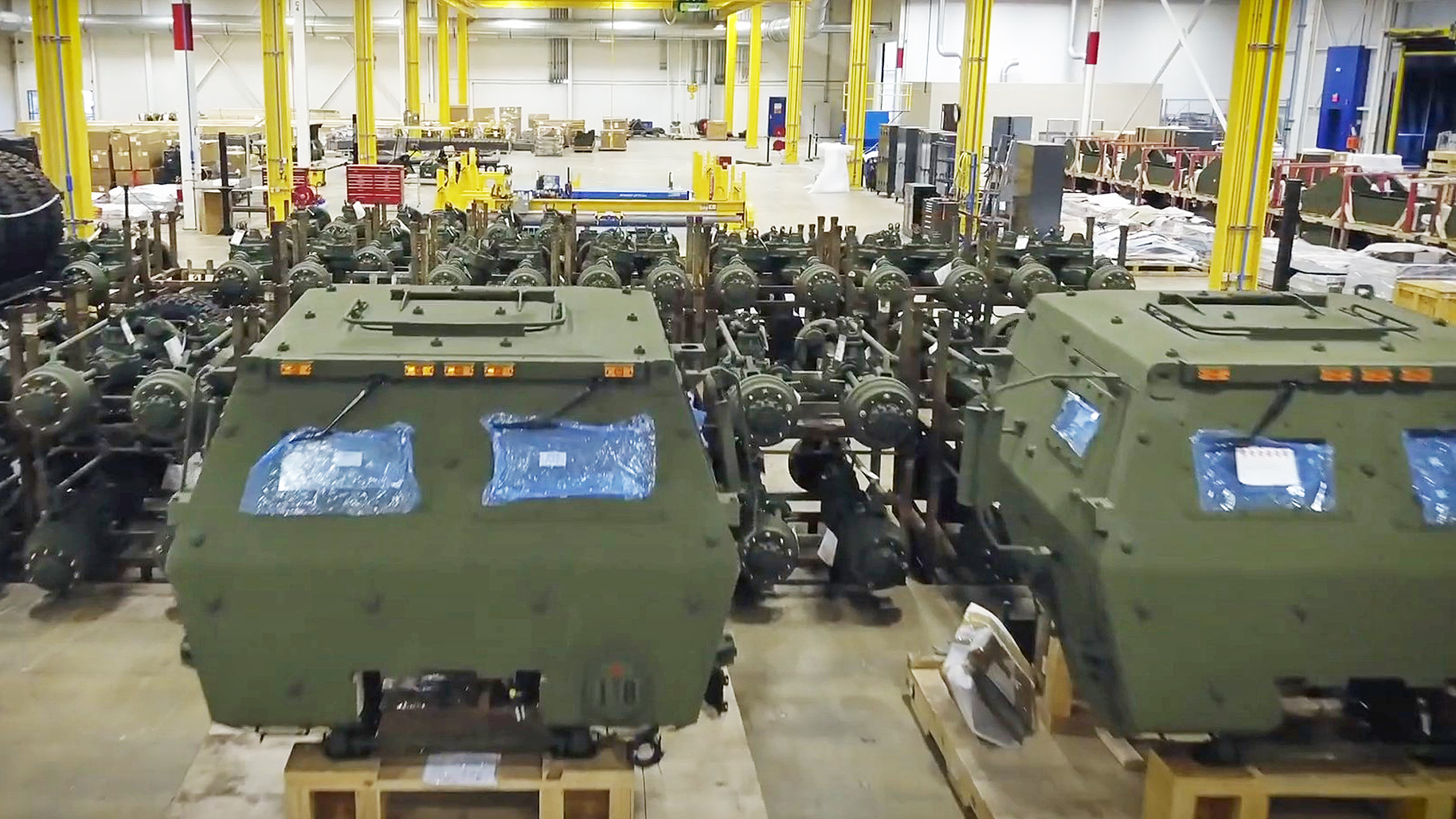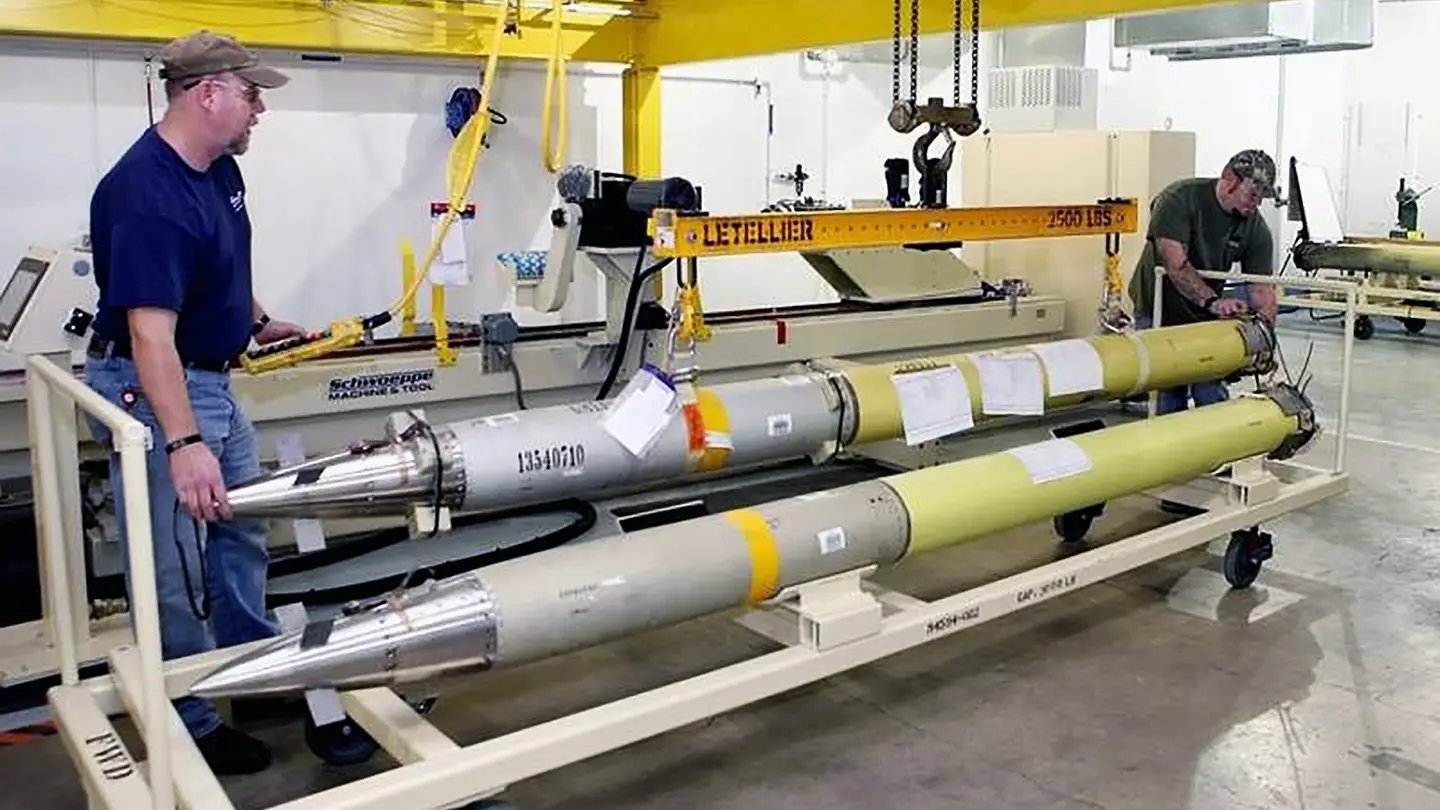Recognizing the tremendous amount of U.S. weaponry provided to Ukraine since the beginning of Russia’s all-out war, the new Fiscal Year 2023 National Defense Authorization Act (NDAA) agreement hammered out Tuesday night calls for a massive multi-year munitions procurement plan to help replenish the Pentagon’s supply of missiles. Artillery shells, M142 High Mobility Artillery Rocket Systems, or HIMARS multiple launch rocket systems (MLRS), FIM–92 Stinger short-range heat-seeking surface-to-air missile systems, FGM–148 Javelin anti-tank missile systems, and PATRIOT Advanced Capability–3 (PAC–3) Missile Segment Enhancement (MSE) missiles are mentioned in the NDAA, among many other items.
The munitions procurement plan is part of the proposed $857.9 billion NDAA that the House could vote on tomorrow, and the Senate as early as next week.
The plan has a $2.7 billion price tag, a Senate aide familiar with the legislation told The War Zone. It is a five-year authorization, but contracts need to be issued by Sept. 30, 2024, according to the aide.
The new spending plan comes as the Pentagon is examining ways to ensure the U.S. has enough weaponry to fight its own battles, especially as concerns grow about a potential conflict with China over Taiwan, while maintaining support for Ukraine.
“We are going through a study, an analysis right now, to ensure that our war plans, our contingency plans, which we have multiples around the world in different theaters, to make sure that we’ve done the right math, the right estimates,” Chairman of the Joint Chiefs of Staff General Mark Milley said at an event on Tuesday, according to Reuters.
Beyond the types of arms it has provided to Ukraine, the NDAA procurement plan appears to address lessons learned from that conflict, calling for the Pentagon to purchase many more weapons like the Army Tactical Missile System (ATACMS) short-range ballistic missile, Long Range Anti-Ship Missiles and Joint Air-to-Surface Standoff Missiles, among other munitions.
The NDAA procurement plan is designed to give the Department of Defense (DOD) additional temporary acquisition flexibility to increase its “stocks of critical munitions, provide material and related services to allies and partners that have supported Ukraine, and provide material and services to Ukraine,” according to the joint House and Senate Armed Services committees’ statement on the NDAA.
Since the start of Russia’s all-out war on Ukraine, the U.S. has provided or promised Ukraine nearly $20 billion worth of weapons, munitions and other items, including more than a million 155mm howitzer rounds, 38 HIMARS and an undisclosed amount of Guided Multiple Launch Rocket Systems (GMLRS) munitions to go with them; more than 1,600 Stinger anti-aircraft system; more than 8,500 Javelin anti-armor systems; two Harpoon coastal defense systems; and an undisclosed number of High-speed Anti-radiation missiles (HARMs).

Section 1244 (Temporary Authorizations Related To Ukraine and Other Matters) of the proposed 2023 NDAA released Tuesday calls for the procurement of:
- 864,000 155mm rounds, including XM1128, XM1113, M107, and M795 rounds;
- 2,050 155m Excalibur M982A1 rounds;
- 12,000 AGM–179 Joint Air-to-Ground Missiles (JAGM);
- 700 M142 High Mobility Artillery Rocket Systems (HIMARS);
- 1,700 MGM–140 Army Tactical Missile Systems (ATACMS);
- 2,600 Harpoons;
- 1,250 Naval Strike Missiles;
- 106,000 Guided Multiple Launch Rocket Systems (GMLRS);
- 3,850 PATRIOT Advanced Capability–3 (PAC–3) Missile Segment Enhancement (MSE) missiles;
- 5,600 FIM–92 Stingers;
- 28,300 FGM–148 Javelins;
- 5,100 AIM–120 Advanced Medium Range Air-to-Air Missiles (AMRAAM);
- 2,250,000 Modular Artillery Charge System (MACS);
- 950 Long Range Anti-Ship Missiles (LRASM);
- 3,100 Joint Air-to-Surface Standoff Missiles (JASSM);
- 1,500 Standard Missle–6 Missiles (SM–6); and
- 5,100 Sidewinder Missiles (AIM–9X).

The amount of weaponry provided to Ukraine and U.S. allies has strained the Pentagon’s ability to procure enough of some of these systems, thanks to a combination of budget crunches, reduced emphasis on them during 20 years of a counterterrorism fight in Afghanistan, Iraq and elsewhere and a cumbersome supply chain, something you can read more about here.
Given all those concerns, the amount of time it will take to actually get these items into supply depots remains unknown, given the long procurement lead time and a defense industrial base already struggling to cope with demand. Expanding the ability to produce high-tech weaponry is very costly and anything but a quick process.
The new multi-year procurement authority provided under the NDAA is not only “essential to increasing the Pentagon’s stocks of such munitions,” but also to improving warfighting readiness, providing the defense industrial base with predictable production opportunities and firm contractual commitments, ensuring consistent funding across the DOD’s Future Years Defense Program, increasing and expanding defense industrial capacity, and coordinating the timing and funding for capital expenditures with defense contractors, according to the joint statement.
Though Americans still strongly back the US providing aid for Ukraine’s fight against Russia, “there has been a decline in support amongst Republicans as some prominent GOP politicians and media figures express opposition to the US providing additional support to Kyiv, a new poll has found,” according to CNN.
Though he said he hadn’t seen the poll, Secretary of State Antony Blinken told reporters on Wednesday that the Biden administration remains committed to defending Kyiv regardless of indications that the American public’s interest in continuing support for Ukraine may be flagging.
“We don’t do policy by polls,” Blinken said. “We do policy based on the interests of the United States, and the interests of the United States are clearly in supporting and helping Ukraine defend itself against this aggression from Russia.”

Still, with the Republicans taking control of the House next year, there remains an undercurrent of concern in Ukraine about the continuation of the current levels of support, not just from the U.S., but across NATO and its allies as well.
The war is now largely a grinding slog with few major territorial gains and increasing losses in personnel and equipment on both sides. Ukraine, however, is intent on pressing the gains it has made in the south and east, with an eye toward even retaking the Crimean peninsula Russia has occupied since 2014.
Its chances of succeeding in those endeavors would be greatly diminished with any significant reduction in aid from the U.S. and allies, so we will continue to watch how all this plays out.
Contact the author: howard@thewarzone.com
